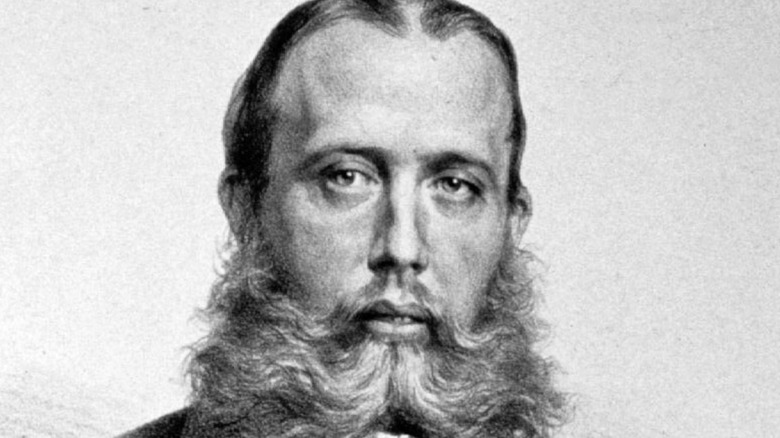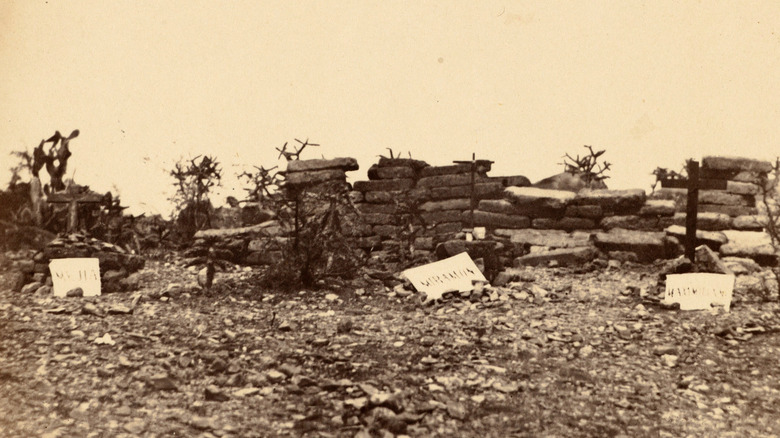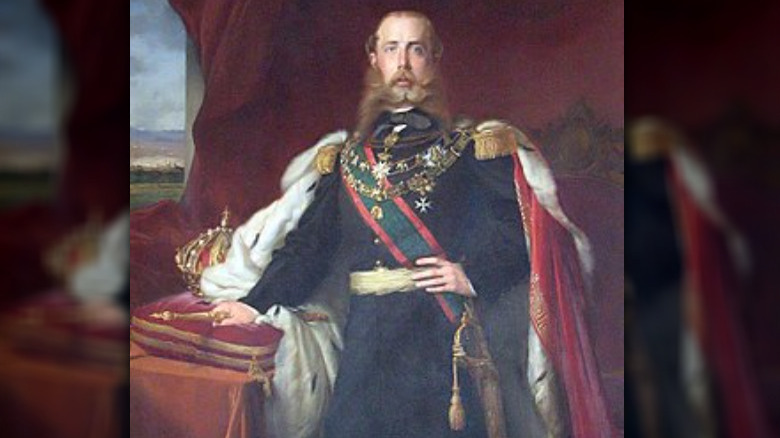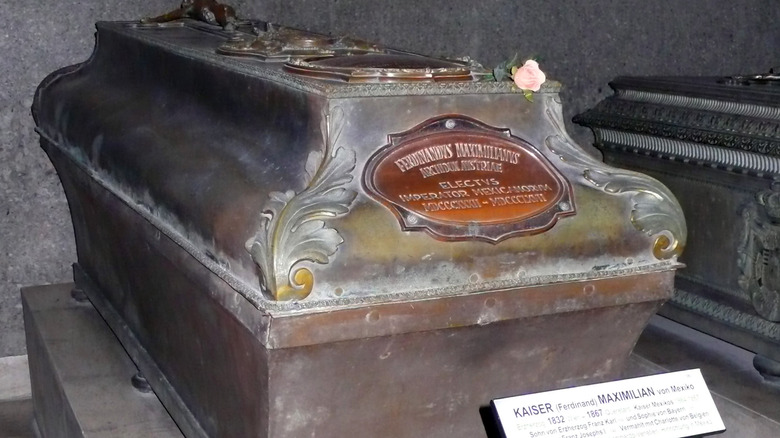What Really Happened To Maximillian I Of Mexico?
In late 1861, a coalition of French, British, and Spanish forces landed at Veracruz, Mexico in order to ensure that Mexico paid debts it had incurred in the past decade. At least that's what Napoleon III told his British and Spanish friends. It quickly became clear that Napoleon intended to invade Mexico and install a monarch to rule over it.
The French, though they suffered some early losses, ultimately overpowered the country, driving President Benito Juarez from the capital, Mexico City, in 1863. That summer, it was decided that the new government was going to be an absolute monarchy, and that Maximillian von Habsburg, brother to the Austro-Hungarian emperor, would be its emperor.
Max arrived in 1864. Some 18 months later, the French armies that had been supporting him began to pull out of the country. Without that support the imperial army began to crumble, and by 1867 he and his army had been trapped in the city of Querétaro. Maximilian had ample opportunity to leave the country, but he decided to stay and meet his fate as Emperor of Mexico (via Grotius, posted at ResearchGate).
The final days of Maximilian I of Mexico
The position of the imperial army in Querétaro was hopeless. Emperor Maximilian finally decided to try to escape, but he was betrayed by a guard who let the Republican army into the city. Maximilian was promptly court martialed and sentenced to death by firing squad (via Unofficial Royalty).
The clashing armies had long since abandoned mercy for their enemies. Maximilian had ordered that anyone taking up arms against him was to be tried and executed within 24 hours of being captured. Over 10,000 Mexicans met this fate at the hands of Maximilian's forces. Thus, when he was captured, Juarez not only wanted to avenge the soldiers who had fought for him, he wanted to send a message that Mexico wasn't the playground for foreign powers.
When it became apparent that Juarez would have Maximilian executed by firing squad, the great powers of Europe cried out for clemency. England's Queen Victoria made a personal appeal to spare Maximilian's life. But Juarez would not budge. On the morning of June 19, 1867, Emperor Maximilian I of Mexico was executed by firing squad at the site pictured above (via Grotius).
Or was he?
Everything beyond this point is speculation put forth by Salvadoran architect Rolando Déneke. It's known that Benito Juárez was a Freemason; Déneke speculates that Maximilian was as well, and that the fraternal ties between the two men prevented Juárez from taking Maximilian's life. Instead, Maximilian is sworn to silence in exchange for his life.
Déneke supports this claim with a chain of fortuitous circumstances. Shortly after Maximilian's supposed execution, Justo Armas appeared in El Salvador. He was a man who had an aristocratic bearing, who was immediately welcomed into the inner circle of high society, who had a strong grasp of the German language, and who refused to speak of his past.
It is said that Armas and Maximilian shared a great physical resemblance and that their handwriting was indistinguishable. It is said that Armas owned many personal items that once belonged to Maximilian as well. Most interesting of all are the two Austrian diplomats that are said to have visited Armas in 1914. A girl listening at the door of the private meeting is said to have heard Armas refuse to return to Austria and take up his brother's crown. Case closed (via El Blog de Ruy el Historiador).
Or is it?
There are lots of problems with Déneke's theory. The first one is that Maximilian's death is well testified. His body was displayed for a time before being returned to Austria. There are eyewitness accounts of his last days that leave little room for conspiracy.
Another problem is the source of most of Déneke's information: his great-grandmother. More specifically, most of his accounts of Armas' life came to Déneke via his grandmother, who in turn was told the stories by her mother — it hardly holds up to historical rigor.
Another problem is the idea that Freemasons are obliged to not harm each other. Just in Mexico we have the example of Anastasio Bustamante ordering the execution of Vicente Guerrero — both Freemasons.
Déneke has claimed to have carried out DNA analysis comparing Armas' DNA with that of a member of the Habsburg family, but the sample taken from Armas was contaminated, so the results were inconclusive. Ultimately, it doesn't matter. The Mexican Republic was victorious and both the French and Austrian empires have been relegated to the history books (via El Blog de Ruy el Historiador).



